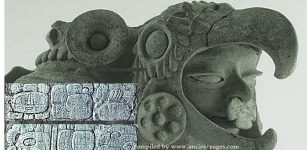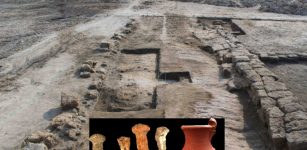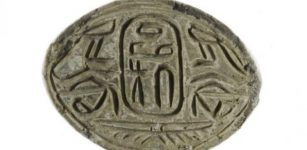Ancient Life-Size Marble Statue Of Hercules Discovered In Rome
Jan Bartek - AncientPages.com - Archaeologists in Rome, Italy, have again reason to be proud of a new discovery. This time scientists unearthed an ancient marble statue of Hercules during excavation works in Parco Scott, part of the Appia Antica Archaeological Park.
Famous for his strength and adventures, Hercules is the Roman equivalent of the Greek divine hero Heracles.
Photo credit: Parco Regionale dell' Appia Antica
According to the Appia Antica Archaeological Park the unearthed statue "can certainly be identified as a figure representing Hercules" due to "the club and the lion's coat covering its head." According to reports, the statue likely dates back to Rome's imperial period, which stretched from 27 B.C to 476 A.D.
"Beauties still emerge from the roots of the capital that we aim to enhance every day and that we want to make accessible to the widest possible public, "Antonella Melito, vice president of the Capitoline Urban Planning Commission, said commenting on the archaeological discovery.
The life-size marble statue of Hercules was "not found in its original context however and that it had been buried there during construction works for the sewer system in the first half of the 20th century," Wanted in Rome reports.
"At the time there were no archaeological checks, so it could happen", Francesca Romana Paolillo of the Italian culture ministry told Corriere della Sera newspaper, adding that the statue is currently undergoing tests to determine its origin and date.
Paolillo also stressed that the statue "represents a figure dressed as Hercules, not the mythological hero himself."
The relic was discovered 20 meters underground, around the second mile of the Appian Way, the ancient Roman road seeking recognition from UNESCO as a World Heritage site.
The Appian Way spans 550 km between Rome and the southern Italian city of Brindisi.
It was designed in 312 B.C. by statesman Appio Claudio Cieco. His goal was to build a road connecting Rome to Capua to move troops southwards during the Second Samnite War (326-304 BC).
See also: More Archaeology News
Later, the route was extended to Brindisi to directly connect with Greece, the East, and Egypt, for military expeditions, travel, and trade.
It was the most famous route in the Roman era.
Written by Jan Bartek - AncientPages.com Staff Writer





















